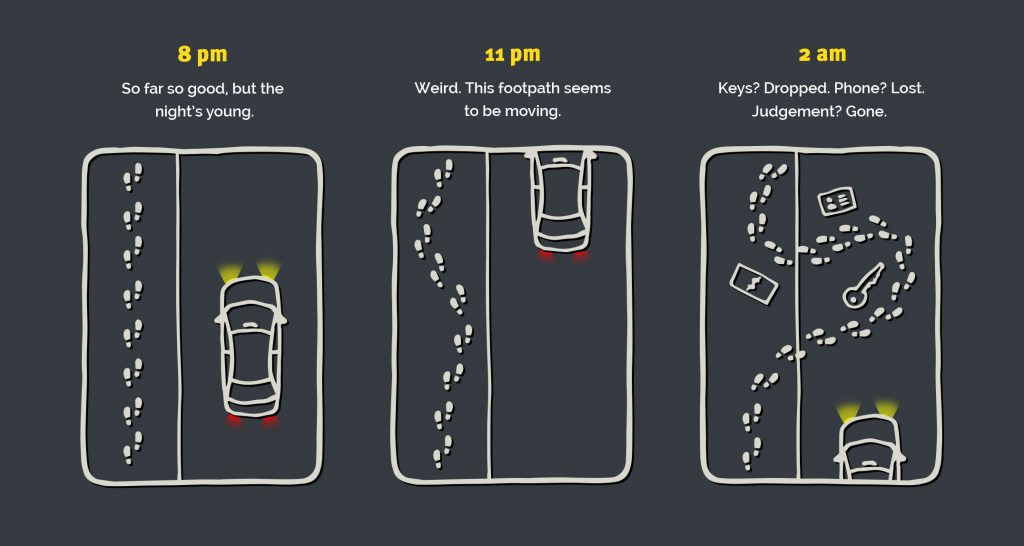Tips for walking safely
- Pay attention when on or near the road. Be aware and cross with care.
- Never assume a driver has seen you.
- Use designated crossings (pedestrian crossings, traffic signals or pedestrian refuges) wherever possible to cross roads, railway and tram tracks.
- If there is no crossing within 20 metres, cross by the shortest and safest route.
- Always walk on footpaths or nature strips where possible. If there is no footpath or nature strip, walk so you’re facing oncoming traffic.
- Be very cautious of traffic near crests of hills and curves. If a vehicle is approaching, make sure you have a safe escape available and be ready to use it.
- Stay alert – wearing headphones and using a mobile phone will reduce awareness of what is happening around you.
- If you’ve been drinking alcohol, walk safely by staying on footpaths and cross at designated crossings.
- At railway level crossings, wait for the boom to rise, warning lights to stop flashing and bells to stop before crossing –a second train may be approaching.
- Never walk along tram or railway tracks.
Learn more about Queensland Walking Strategy, and where to walk, including walking maps.
Watch “Take care near the road”
Driving or riding around pedestrians
When driving or riding in Queensland, you must:
- give way to pedestrians on or entering a children’s, pedestrian or marked foot crossings
- give way to pedestrians on or entering a road you’re turning into
- give way to pedestrians in a share zone or slip lane
- travel at a speed allowing you to stop safely at a crossing if needed
- travel carefully in areas with children—such as school and playgrounds
- allow more time for a person with a disability, or a senior pedestrian to cross the road
- prepare to stop if you see another vehicle or bicycle stop, or slow down near a crossing
- reduce your speed at night around entertainment venues where people gather.
Learn more about road rules for sharing the road with pedestrians.
Rethink drinking and walking
We all know the dangers of drinking and driving, but what about drinking and then walking? More than 30 percent of pedestrians killed on the road have 0.05 blood alcohol readings.
Alcohol can impair decision making and delay reaction times, making crossing the road a dangerous task. You don’t need to be walking all the way home for drink walking to be risky – even moving between venues or walking to your ride home can be risky if you aren’t careful. So, if you’re out drinking, plan another way home, and take care near the road.

For kids
To help your children become safe pedestrians, try:
- being a model of safe behaviour. Hold the hands of small children, don’t use your phone while walking near roads, don’t take unsafe short cuts or cross on ‘Don’t Walk’ signals even if the road looks clear.
- talking with them about your actions and decisions as you walk. Ask them:
– is this a safe place to cross?
– is there somewhere better to cross, like a pedestrian crossing?
– can we be seen by drivers?
– where is the best place to walk?
– which road should we take to get home? - exploring with them, so children experience different situations and learn about their local area.
- giving them more responsibility as they demonstrate more road sense. Get them to direct the way – they might show you places and routes you’ve never been before.
- encouraging your kids to walk with friends as they get older and become more independent.
- making sure children know people who live along the route or places they can go if they feel unsafe.
For information visit Neighbourhood Watch or the Queensland Police Service.
